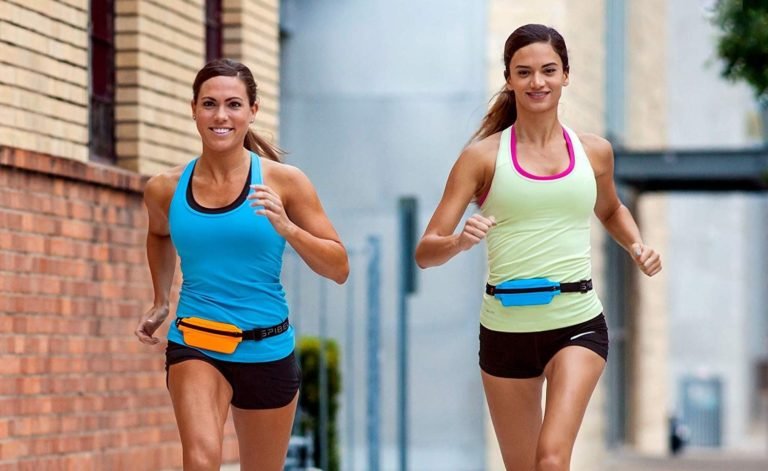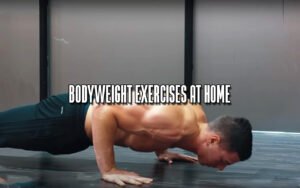
One of the challenges with any exercise routine is to avoid boredom. Whether running on a treadmill, pulling down on a rowing machine or using the elliptical; working out for 1-2 hours every couple of days isn’t the most exciting thing. In response to the desires of worldwide fitness enthusiasts, fitness equipment has got a long-needed overhaul to improve how it responds to consumer’ wants.
The confluence of mobile apps with exercising, along with the use of virtual reality visuals, is transforming the way we work off the pounds (or simply stay in shape). The use of virtual reality is transporting us to far off locations virtually, turning a solo run into a group one either from the comfort of your own home or the local gym.
Virtual Runner
One of the pioneers in the new mobile apps for runners is Virtual Runner. The company aims to transport runners from their treadmill over too far off locations to compete in scheduled running programs with other virtual runners and flesh & blood people on the course. Viewing is possible via a TV, a PC, an iPad or an Android device.
 In August 2016, the company chose the popular Falmouth Road Race in picturesque Massachusetts to try out their technology. Without needing to travel to the state, runners using a treadmill either in a gym or at home, competed on the course in Falmouth. This was made possible by the pre-filming of the entire course so that it was shown to the runner as they progressed, thus transporting them from their home or gym to the road itself. All available in the latest high-definition video too.
In August 2016, the company chose the popular Falmouth Road Race in picturesque Massachusetts to try out their technology. Without needing to travel to the state, runners using a treadmill either in a gym or at home, competed on the course in Falmouth. This was made possible by the pre-filming of the entire course so that it was shown to the runner as they progressed, thus transporting them from their home or gym to the road itself. All available in the latest high-definition video too.
Outside Interactive, the people behind the Virtual Runner app succeeded for the first time in letting runners complete virtually. Since this development, they’ve now expanded to ten routes including a half-marathon in Maine, and a circuit around famous Washington DC historical monuments to keep things interesting!
The true benefit of the use of virtual technology is mixing the virtual with the immersive. When running for an hour, staying focused avoids stumbling and falling, or becoming disinterested. Anything is useful to keep on track, whether it’s working to improve your personal best time or watching the virtual course go by instead of the wall of your garage or the bank of widescreen TVs at the gym showing local programming.
Treadmill Trails
 Another mobile app trying this approach is Treadmill Trails (via iOS or Android apps) which transports people either walking or running to interesting public paths in Yosemite, Big Sur, along with the Appalachian Trail or through New York’s Central Park.
Another mobile app trying this approach is Treadmill Trails (via iOS or Android apps) which transports people either walking or running to interesting public paths in Yosemite, Big Sur, along with the Appalachian Trail or through New York’s Central Park.
Given the virtual nature of the trails, it’s possible to use a variety of exercise equipment like an elliptical, a stationary bike, or even a step-deck rather than only a treadmill while enjoying improved views. Each course is sold individually for 99c and is owned forever once purchased.
RunSocial
 The RunSocial app is currently only available in the Apple Store. It features several interesting routes. These include Death Valley in California, one in Tuscany just south of Florence, Italy, the London Marathon, around the Swiss Alps, and even Tibet. Fifteen HD course have been recorded so far.
The RunSocial app is currently only available in the Apple Store. It features several interesting routes. These include Death Valley in California, one in Tuscany just south of Florence, Italy, the London Marathon, around the Swiss Alps, and even Tibet. Fifteen HD course have been recorded so far.
Astronaut Tim Peake used RunSocial to compete virtually in the Digital Virgin Money London Marathon during his half-year stint at the International Space Station from December 2015 to May 2016. There’ s a social events aspect to the RunSocial app too where organizers can create their own virtual running events and invite people to participate.
BitGym
 BitGym is another company competing in this space by letting exercisers transport themselves virtually to another environment. Over 100 HD environments in this case, rather than just a handful.
BitGym is another company competing in this space by letting exercisers transport themselves virtually to another environment. Over 100 HD environments in this case, rather than just a handful.
Whether using a treadmill, a bike, a rowing machine or an elliptical, just place the phone or tablet in front of the equipment to watch it while working out. Alternatively, the app is accessible via Apple TV, Chromecast or with an HDMI hook-up from your mobile device to watch on a large screen. Heart rate monitors connected via Bluetooth to an iOS device is also able to track heartbeats and include that in the BitGym data output.
The immersion with this app is strong with the visuals, the local sounds, and facts about the places being shared. The motion of the exercising is depicted within the app too using the front camera to see how you’re moving and factor this movement into the app’s data. Each user has the chance to either stream a tour route or download it. Depending on the internet connection speed, streaming gets you exercising sooner on a chosen tour whereas downloading the tour makes it accessible from anywhere offline.
For people who enjoy natural trails and walking, as opposed to walking, there’s plenty of natural beauty to enjoy while putting one foot in front of the other on the treadmill. The exercise mode is selectable from the start.
Speed Control within VR Apps
The rate of the HD tour display is different and not controlled the same way with each of the above mobile apps. BitGym, which was initially Kickstarter-funded, uses the front-facing camera to track (with permission and toggleable on/off at any time) the exerciser’s movements. When they slow down, the forward progress on the trail slows to match it.
In the case of other apps like RunSocial and Virtual Runner, this isn’t the case. Either a pedometer or a footpad is needed to determine the amount of forwarding progress to match the speed of the virtual environment to the actual movements of the person.
All-in-One VR Exercise Solution
With every new idea in the fitness industry comes a variety of different approaches. In this case, the VRLA, which is the largest virtual reality event in the world, continues to see new developments in technology and communications that become intertwined with the fitness industry.
Merging virtual reality with exercise isn’t only possible using existing pieces of fitness equipment. It’s also possible to purchase select pieces that are already fully integrated virtual reality exercising tools. No more plugging in your iPad to maintain its battery and balancing it precariously on the front of the elliptical hoping the vibrations don’t knock the glass-bonded tablet to the ground and its demise…
 Enter VirZOOM. Combining the best of virtual reality and spinning, the team at VirZOOM are bringing gaming to the exercise arena in a big way. The bike is a regular one to peddle on but has a controller that wirelessly communicates the movements via Bluetooth. Heart rate is steadily monitored to ensure all exercise is performed in an aerobic state to get the most fat burn out of it. There are also 8 resistance settings to adjust how hard one must peddle to get up the hill or mountainside and then down the other side.
Enter VirZOOM. Combining the best of virtual reality and spinning, the team at VirZOOM are bringing gaming to the exercise arena in a big way. The bike is a regular one to peddle on but has a controller that wirelessly communicates the movements via Bluetooth. Heart rate is steadily monitored to ensure all exercise is performed in an aerobic state to get the most fat burn out of it. There are also 8 resistance settings to adjust how hard one must peddle to get up the hill or mountainside and then down the other side.
The best thing is that the VirZOOM virtual reality bike is its compatibility with various VR systems on the market today. Whether owning a Playstation VR system, an HTC Vive headset or the Oculus Rift system, their headsets are all compatible with the VirZOOM system (people must buy the VR headsets separately). As a result, this makes their system akin to an open-source one that works with everything and not a closed one that doesn’t.
Alternatively, for people who don’t own a VR headset, the company also provides access to their own arcade games to have some fun while exercising. The bike has directional and speed sensors running. The readings from these sensors get fed into the games to make them interactive, creating a more immersive environment while exercising.
VR Spin Classes
Virtual reality with spin classes isn’t entirely new. Gyms have used curved screens for a few years to project virtual courses to keep things more interesting for riders. However, personalized systems work better in many cases because the course tracks the individual rider’s progress which a group simulation cannot do.
Virtual Reality Headset to Exercise on any Equipment, Anywhere
Taking yet another approach, Arealer has opted to produce their own virtual headset rather than exercise equipment that’s compatible with other headsets on the market or combining mobile apps with recumbent bikes, treadmills and rowing machines.
For people who take frequent business trips and need a lightweight, portable system that will work in local gyms, the hotel gym equipment (often sparsely furnished) and their home gym equipment, the Arealer VR Sky All-in-one headset provides an interesting new option.
The headset is designed for 3D visuals using a 5.5-inch 1080p Full HD TFT display. There is a 100-degree field of view with excellent frame per second performance through the 70 Hz refresh rate. The improved display avoids issues with blue-light and persistent afterglow in post-usage vision. The internal lens is a 45mm low-dispersion transparent optic resin one. There are nine sensors that take many axle readings to provide 360-degree tracking of head movements to deliver visuals that match the exact direction being viewed virtually.
The hardware is based around an Octa-Core A7 chipset running at 2.0Ghz and a Power VR GPU. There is 16 GB’s of onboard storage and 2 GB’s of DDR 3 RAM. A micro SD card supports 32 GB cards. Both Wi-Fi and Bluetooth 4.0 is supported too. The headset is powered by a 4,000mAh rechargeable battery.
The software runs a modified version of Android 4.4.42 operating system with a different front-end skin. Both the Google Play store and Theater are accessible from within the headset to download VR-compatible games and immersive environments. Both the Wi-Fi and Bluetooth is useful for connecting to the web and accessible to other Android-based systems.
Putting It All Together
It is clear that virtual reality and fitness are being combined in some interesting ways to make exercising more fun and less dull. Gyms usually have a line of TVs on one wall to provide entertainment. Some high-end treadmills and rowing machines (amongst others) often come with their own mini HD displays too. Gyms are doing what they can to mitigate boredom, but it’s an uphill battle that they don’t always win.
Virtual reality is being deployed in many new ways that provide creative solutions to age-old problems. The Dallas Cowboys are using a training system called Strivr that combines virtual reality with pre-set drills to make workouts more interactive whether on the field or in the gym. Biomechanics within VR environments is being worked on to improve body movement training for new and experienced athletes. These are just a few of the recent examples of exciting developments in the virtual reality space.
With workouts specifically, the options are wide open. For people with a home gym or who prefer to go to the commercial gym, the availability of mobile apps that bring real environments recorded in HD into space is creating a slow revolution. Virtual environments make walking or running more desirable and as such only encourage a greater level of activity in people of all ages.
Outside of the simplicity of viewing your virtual progress on a mobile device, a VR headset (either specific to fitness or more general ones like Oculus Rift) can hook into what exercise you’re doing and offer a new way to enjoy it. Developers continue to release both games and virtual environments to make exercising much less painful by distracting each person from the task at hand by transporting them to a place that captures their imagination. Anything that takes the mind off the thousands of steps necessary to stay in shape or drop the pounds has to be a good thing.
Whichever choice you make, the health industry is clear that regular exercise is required to remove extra fat cells and promote better health. In an age where the recumbent bike bought with enthusiasm sits unused in the garage or rented storage locker, what’s needed is new ways to encourage people to move more than they currently do. The health of the nation depends on it, so the new growth in the use of virtual reality systems should only be seen as a good thing. Plus, it’s like taking a scenic vacation without the packing and waiting through delays at the airport. Who can complain about that?!








